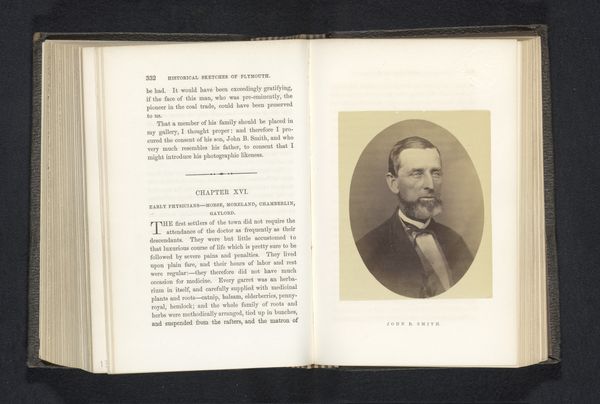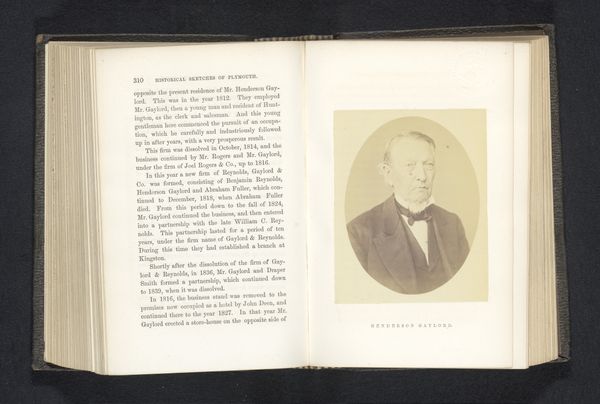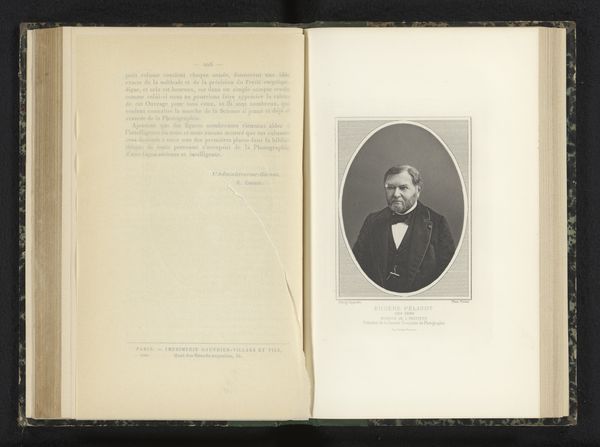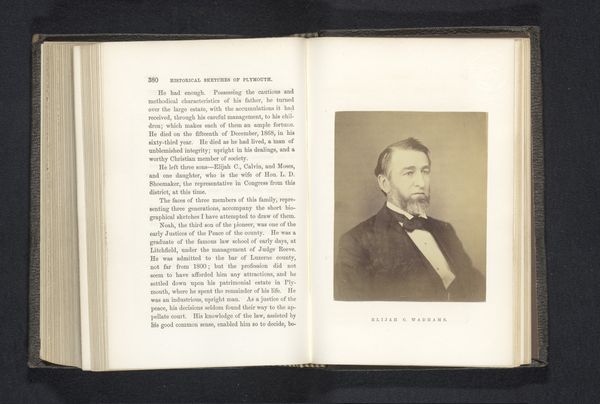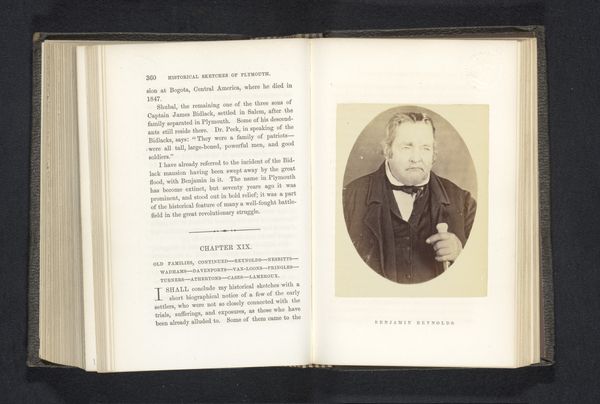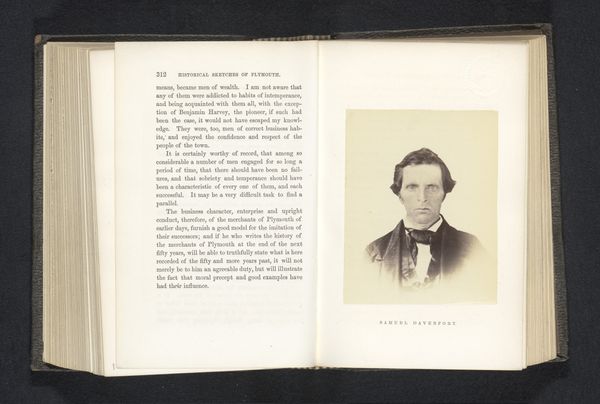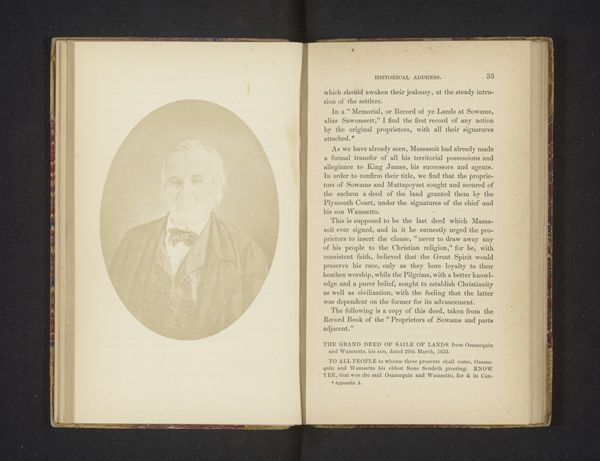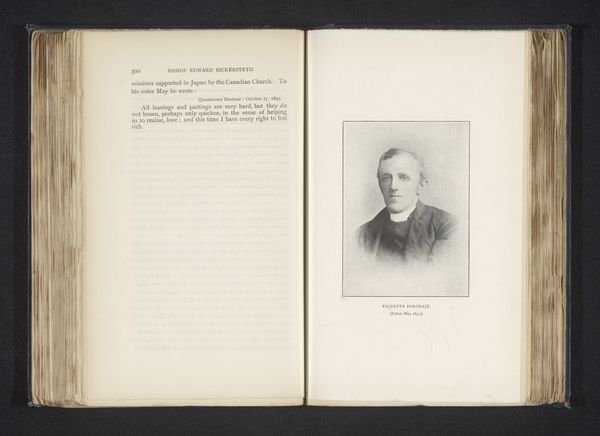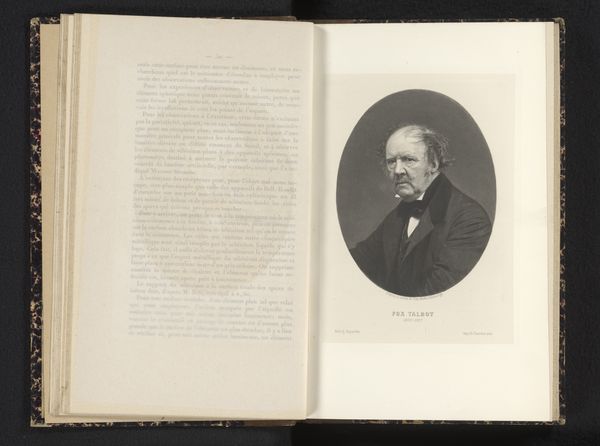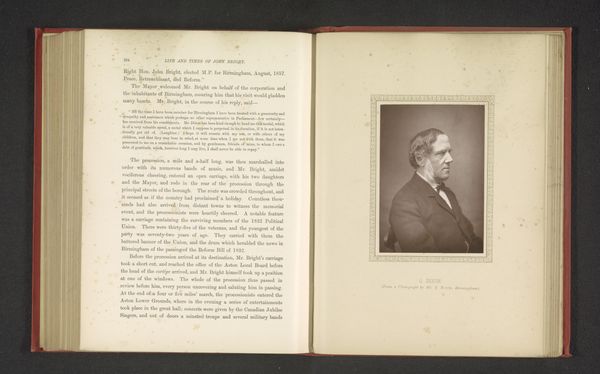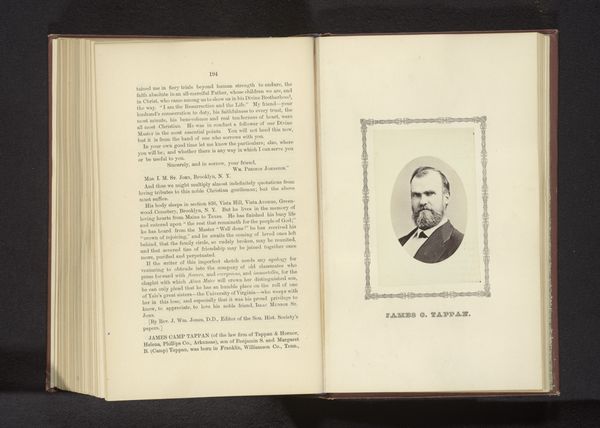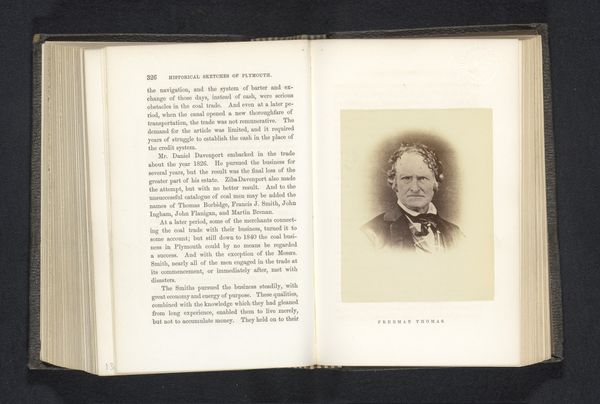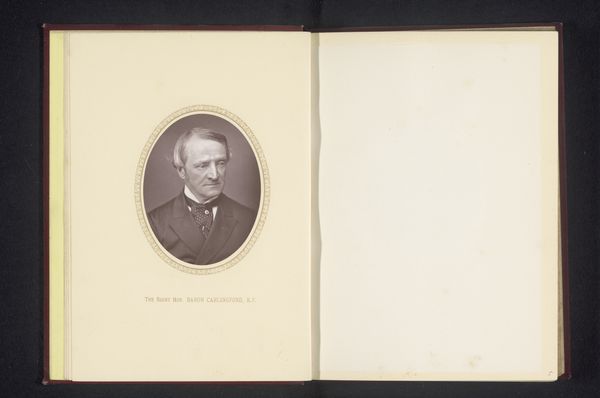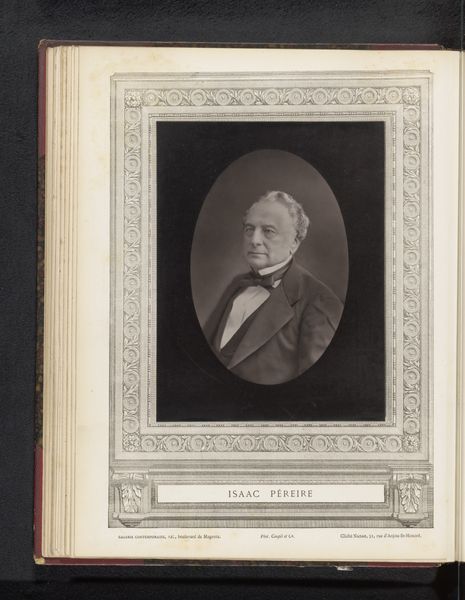
print, photography, albumen-print
#
portrait
# print
#
impressionism
#
photography
#
albumen-print
Dimensions: height 110 mm, width 87 mm
Copyright: Rijks Museum: Open Domain
Curator: Here we have a reproduction of a portrait of Samuel Wadhams, likely made before 1873, presented as an albumen print. What's your first take on this piece? Editor: It strikes me as quite dignified, even somber. The light is soft, focusing our attention on his face, but there’s also a clear visual weight to his dark jacket, anchoring the image. It feels very deliberate. Curator: Indeed. The albumen print process itself lends to that somberness; creating depth and warmth through chemical reaction, rather than mass mechanical reproduction. Notice the tonal gradations. It’s not merely a surface-level depiction, but rather, reveals detail as we gaze at it longer. This particular printmaking method was commercially popular, meaning portraiture became far more accessible, contributing to a growing middle-class consciousness around visual representation and memorialization. Editor: Interesting. I'm immediately drawn to the symbols of status here. His carefully arranged cravat, the cut of his coat, are all indicators of societal position and, by extension, values. It also feels inherently…American. A certain pragmatism and emphasis on self-presentation, reflecting an era concerned with shaping a national identity, are very subtly, very subtly conveyed in how he chose to have himself represented. Curator: You’re spot on about the construction of identity through material symbols! These visual elements, when combined with accessible, yet permanent albumen printing technologies, played a major role in cementing ideas around ideal manhood during the 19th century. Editor: The gaze, too. He looks directly at us. There is something direct and self-assured in this gaze, an implied moral uprightness even. The image says as much about the values he wished to project as it does about the individual man himself. Curator: And now we view the artifacts as symbols, representing cultural history. It gives pause to think how deeply interwoven the production process, even in these reproducible mediums, is with individual and communal intention, isn’t it? Editor: Absolutely. Analyzing images such as these shows how much a seemingly simple photograph can tell us. These historical impressions remind us to consider that beyond the process, material, and even the sitter, images endure as symbols of lived moments, carrying forward echoes of memory and intention.
Comments
No comments
Be the first to comment and join the conversation on the ultimate creative platform.
